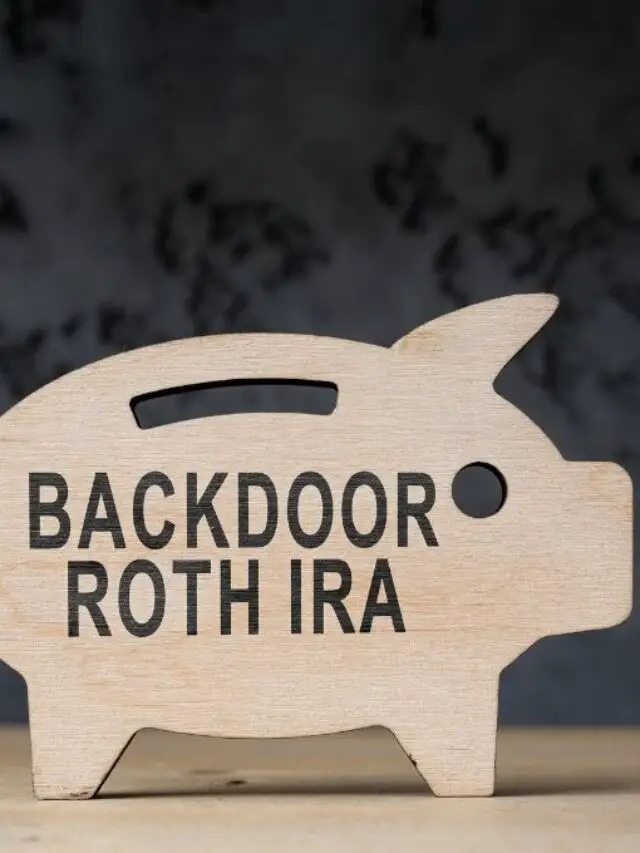Hey there, future retirees! Ever heard of a Traditional IRA? If you’re scratching your head, don’t sweat it. This guide’s got you covered. Retirement planning can feel like a maze, but an IRA serves as a trusty compass. It’s one of those financial tools that can make your golden years truly shine. We’re diving deep into the nitty-gritty, from tax perks to investment options. So, whether you’re a finance whiz or a total newbie, stick around. You’re about to get a crash course in one of the most underrated retirement tools out there.
Table of Contents
What is a Traditional IRA?
Alright, let’s get down to brass tacks. A Traditional IRA, or Individual Retirement Account, is like a treasure chest for your retirement years. You stash away money now, watch it grow over time, and then—voila!—you’ve got a nice little nest egg waiting for you when you’re ready to kick back and relax. But wait, there’s more. Traditional IRAs aren’t just any old savings account; they come with some sweet tax benefits. Your contributions? Often tax-deductible. Your investments? They grow tax-deferred, meaning you won’t owe Uncle Sam a dime until you start making withdrawals.

Now, you might be thinking, “How does this stack up against other retirement accounts?” Great question. Compared to a Roth IRA or a 401(k), a Traditional IRA has its own unique set of rules and perks. We’ll dive into those comparisons later, but for now, just know that an IRA offers flexibility and tax advantages that can make it a solid choice for many folks.
Eligibility Criteria
So, who can open a Traditional IRA? Good news: the barriers to entry are pretty low. If you’ve got earned income and you’re under the age of 70.5, you’re in the game. Yep, you read that right—age does play a role, but it’s more about setting an upper limit rather than excluding younger folks.
Income-wise, there’s no minimum to worry about, but there are some caps if you’re also contributing to a workplace retirement plan like a 401(k). And if you’re self-employed or a freelancer, don’t fret; you’re also welcome to the IRA party.
Contributions to a Traditional IRA
Alright, let’s talk money. How much can you actually put into a Traditional IRA? For 2021, the max you can contribute is $6,000, or $7,000 if you’re 50 or older. These are known as “catch-up” contributions, and they’re a great way to turbocharge your retirement savings if you got a late start.
Tax time? Here’s where things get juicy. Contributions to a Traditional IRA are often tax-deductible, meaning they can lower your taxable income for the year. But hold up—there are some caveats. If you or your spouse has a retirement plan at work, the deductibility of your contributions might be limited. Read this article to learn about IRA Contribution Limits.
Investment Options
When it comes to a Traditional IRA, you’re not just stuck with boring old stocks and bonds. Nope, the investment world is your oyster. You can diversify your portfolio with a mix of assets like mutual funds, ETFs, and even real estate. The key here is to align your investments with your risk tolerance and time horizon.
Young and feeling a bit daring? You might opt for more aggressive investments. Closer to retirement and want to play it safe? Bonds or conservative mutual funds could be your jam. The point is, a Traditional IRA offers you the flexibility to tailor your investment strategy to your unique needs and goals.
Tax Benefits
Now, let’s get to the good stuff—tax benefits. One of the biggest perks of a Traditional IRA is the tax-deferred growth. In plain English, this means the money you invest grows without getting dinged by taxes each year. You’ll only pay taxes when you start taking money out.
But wait, there’s another cherry on top. Your contributions to a Traditional IRA are often tax-deductible. This can be a game-changer come tax season, potentially lowering your taxable income and putting more money back in your pocket. Just remember, if you or your spouse has a workplace retirement plan, this deductibility might have some limitations.

Withdrawals and Distributions
So, you’ve been diligently stashing away cash in your Traditional IRA. When can you finally get your hands on it? Well, the magic number is 59.5. Once you hit this age, you can start making withdrawals without penalties. But beware, you’ll have to pay income tax on the amount you take out.
And then there’s the concept of Required Minimum Distributions (RMDs). Once you reach 72, you’ve got to start taking out a minimum amount each year. Fail to do so, and you’ll face some hefty penalties. So, it’s crucial to plan ahead and make sure you’re meeting these requirements.
Traditional IRA vs. Roth IRA
The age-old debate: Traditional IRA or Roth IRA? Both have their own merits, and both serve different needs. A Roth IRA allows for tax-free withdrawals in retirement, but you’ve got to pay taxes on contributions upfront. A Traditional IRA, on the other hand, offers tax-deductible contributions and tax-deferred growth, but you’ll pay taxes upon withdrawal.
Another key difference lies in the rules around withdrawals. Roth IRAs are a bit more flexible, allowing for tax-free and penalty-free withdrawals of contributions at any time. Traditional IRAs are more stringent, with penalties for early withdrawals and mandatory RMDs
Common Mistakes to Avoid
Navigating the Traditional IRA landscape can be tricky, and it’s easy to stumble. One common pitfall? Over-contributing. If you exceed the annual limit, you’ll face a penalty. So, always keep track of those numbers
Another blunder folks often make is neglecting Required Minimum Distributions (RMDs). Skipping these can result in a tax penalty that’s half the amount you should have withdrawn. Ouch!
And let’s not forget about early withdrawals. Unless you want to get hit with a 10% penalty, steer clear of dipping into your Traditional IRA before age 59.5.
Wrapping it up!
So, there you have it—a deep dive into the world of Traditional IRAs. Whether you’re a seasoned investor or just getting started, this retirement tool offers a blend of flexibility and tax advantages that can make your golden years truly golden.
Remember, retirement planning isn’t a one-size-fits-all game. Consult a financial advisor to tailor a strategy that fits your unique needs. And don’t forget to revisit your plan regularly; life changes, and your retirement strategy should adapt accordingly.
Frequently Asked Questions (FAQs)
1. What is a Traditional IRA?
A Traditional IRA is an Individual Retirement Account that offers tax-deferred growth and potential tax-deductible contributions.
2. Who is eligible to contribute to a Traditional IRA?
If you have earned income and are under the age of 70.5, you can contribute to a Traditional IRA.
3. How much can I contribute to a Traditional IRA?
For 2021, the maximum contribution is $6,000, or $7,000 if you’re 50 or older.
4. What types of investments can I hold in a Traditional IRA?
You can invest in a variety of assets, including stocks, bonds, mutual funds, ETFs, and even real estate.
5. Are my contributions tax-deductible?
Often, yes. However, the deductibility may be limited if you or your spouse has a workplace retirement plan.
6. When can I start making withdrawals?
You can start making penalty-free withdrawals at age 59.5.
7. What are Required Minimum Distributions (RMDs)?
Starting at age 72, you must begin taking a minimum amount out of your Traditional IRA each year.
8. What’s the difference between a Traditional IRA and a Roth IRA?
The primary difference lies in the tax treatment of contributions and withdrawals. Roth IRAs offer tax-free withdrawals but no upfront tax deduction.
9. What are the penalties for early withdrawal?
If you withdraw funds before age 59.5, you’ll face a 10% penalty in addition to income taxes.
10. Can I convert my Traditional IRA to a Roth IRA?
Yes, this is known as a Roth conversion, but it comes with tax implications.

Prashant Chauhan
Author @ Finance RuffleMeet Prashant Pratap Chauhan, the savvy founder behind Finance Ruffle, a hub for sharp financial insights and expert analysis in the realm of finance blogging.










Pingback: What Is The Required Minimum Distribution (RMD)? 6 Must-Know Powerful Aspects | Finance Ruffle
Pingback: Charitable Donation Tax Deduction Loopholes: 10 Astonishing Loopholes For The Savvy Taxpayer | Finance Ruffle
Pingback: What Is Roth IRA & How It Works? 9 Knowledge Packed Insights | Finance Ruffle
Pingback: Master Financial Literacy: 10 Principles For Managing Personal Finances | Finance Ruffle
Nice post. I was checking constantly this weblog and I am inspired!
Extremely helpful information particularly the last section 🙂 I deal with such information a lot.
I was looking for this particular info for a long time.
Thank you and good luck.
Pingback: Unveiling The Mysteries Of The Backdoor Roth IRA: 8 Powerful Insights | Finance Ruffle
Pingback: IRA Contribution Limits Demystified: 8 Power Moves For Savvy Investors | Finance Ruffle